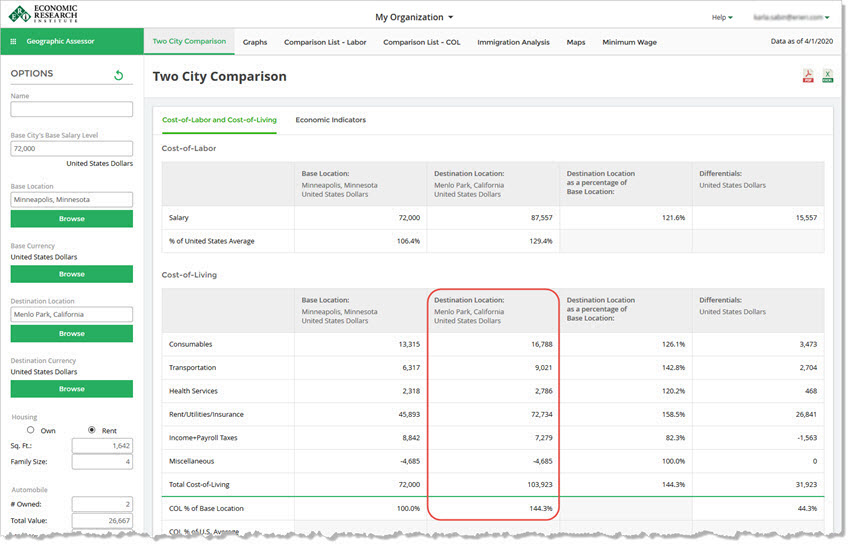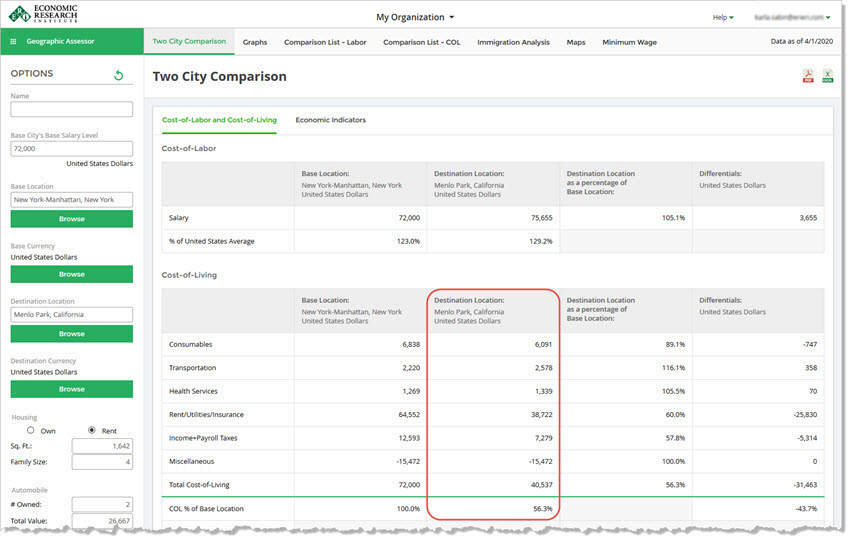QUESTION: When I use the same Destination City, the same earnings level and different Base Cities, why do the values at the Destination City change when the Base City changes? Shouldn't the Destination City values stay the same?
Consider the following examples:
Minneapolis, MN to Menlo Park, CA - $72,000

versus
New York-Manhattan, NY to Menlo Park, CA - $72,000

The question, reworded for this example, would be: "Why aren't the Menlo Park values the same in both comparisons?"
The answer is that $72,000 buys you a different lifestyle in Minneapolis than in New York-Manhattan. You are comparing different spending patterns and different buying power when you change the Base City, and it follows that the Destination City costs will be different as well.
In the first comparison, $72,000 buys a lifestyle in Minneapolis with a certain square footage home, automobile or public transportation expenses, income taxes, etc. This comparison answers the question: How is money distributed when purchasing a $72,000 lifestyle in Minneapolis? What does it cost to buy as close to that lifestyle as possible in Menlo Park?
In the second comparison, $72,000 buys a lifestyle in New York-Manhattan with a different spending pattern - a different square footage home considered "affordable," different automobile or public transportation expenses, different income taxes, etc. This comparison answers the question: How is money distributed when purchasing a $72,000 lifestyle in New York-Manhattan? What does it cost to buy as close to that lifestyle as possible in Menlo Park?
Note, buying power is the inverse of cost of living. Cost of living is the cost of purchasing goods and services, as determined by the demand and supply of goods, services, and property. For example, if the cost of living is 10% higher in an area, the buying power is approximately 10% less in that area.
See Two City Comparison - Background for more information.